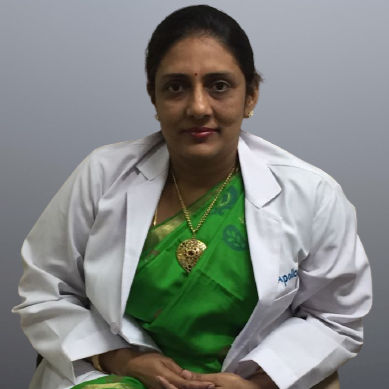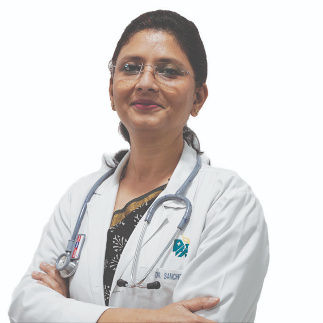PCOD vs. PCOS: Symptoms, Key Differences And Treatment
Learn the key differences between PCOD and PCOS, including symptoms and treatment options. Understand how to manage both conditions for better health and well-being.

Written by Dr.Sonia Bhatt
Last updated on 3rd Jul, 2025
Introduction
Polycystic Ovarian Disease (PCOD) and Polycystic Ovary Syndrome (PCOS) are two prevalent conditions affecting women's hormonal health. Although they share some similarities, their differences are significant in terms of causes, symptoms, and treatment options. Understanding these distinctions is crucial for proper diagnosis and management. In this guide, we will delve deep into the intricacies of these conditions, highlighting their differences, symptoms, causes, diagnosis, treatment options, and the impact they have on women's lives.
What is PCOD?
PCOD (Polycystic Ovary Disease) is a condition where a woman’s ovaries contain numerous small cysts (immature follicles) that have failed to mature into eggs during the menstrual cycle. These cysts are not harmful, but they can cause an imbalance in a woman’s hormonal levels, leading to irregular periods, mild weight gain, and mild acne.
Key Characteristics of PCOD:
Multiple Immature Follicles: Women with PCOD have numerous small cysts that are follicles (immature eggs) that fail to mature.
Hormonal Imbalance: PCOD is often associated with an imbalance of reproductive hormones such as estrogen, progesterone, and luteinising hormone (LH). This imbalance can prevent proper ovulation.
Fertility: Although ovulation may be irregular, women with PCOD can still conceive naturally, though it might be more challenging. Fertility is typically not significantly impacted.
Mild Symptoms: Symptoms of PCOD are usually mild and may include irregular or heavy periods, slight weight gain, and mild acne. Excessive hair growth (hirsutism) and other signs of androgen excess are less common compared to PCOS.
Long-Term Health Risks: PCOD is generally less associated with long-term health complications but can increase the risk of developing insulin resistance, type 2 diabetes, and endometrial cancer if left untreated.
What is PCOS?
PCOS (Polycystic Ovary Syndrome) is a complex condition characterised by hormonal imbalances that affect multiple systems in the body, not just the ovaries. It involves an excess of androgens (male hormones), which can lead to symptoms such as irregular periods, infertility, excessive hair growth, and acne. The cysts that form on the ovaries in PCOS are typically the result of failed ovulation, where an egg is not released properly.
Key Characteristics of PCOS:
Hormonal Imbalance: The primary issue in PCOS is an excess of male hormones (androgens), such as testosterone. This hormonal imbalance can interfere with the development of follicles and prevent ovulation.
Ovarian Cysts: Like PCOD, women with PCOS have multiple cysts on their ovaries. However, these cysts form because the follicles fail to mature and release eggs, leading to anovulation (lack of ovulation).
Fertility Issues: Infertility is one of the most significant concerns in PCOS due to anovulation. Women with PCOS may have difficulty getting pregnant without medical assistance, such as fertility treatments like Clomid or IVF.
Severe Symptoms: PCOS symptoms are more severe and may include irregular periods, severe acne, excessive hair growth (hirsutism), male-pattern baldness, and obesity. Additionally, women with PCOS are more prone to developing insulin resistance, which can lead to type 2 diabetes.
Long-Term Health Risks: PCOS is associated with several long-term health risks, including an increased risk of insulin resistance, type 2 diabetes, high cholesterol, heart disease, sleep apnea, and endometrial cancer if left untreated.
Symptoms of PCOD and PCOS
While PCOD and PCOS share some common symptoms, such as irregular periods and acne, the symptoms of PCOS are typically more severe and pervasive. These can lead to long-term health issues like insulin resistance and cardiovascular problems. Below is a detailed comparison of the symptoms and effects of PCOD and PCOS:
| Symptom | PCOD (Polycystic Ovarian Disease) | PCOS (Polycystic Ovary Syndrome) |
| Menstrual Irregularities | Yes, often mild | Yes, often severe |
| Weight Gain | Common, moderate | Common, often severe |
| Acne | Yes, mild to moderate | Yes, persistent and severe |
| Oily Skin | Yes | Yes |
| Hair Thinning | Yes, mild | Yes, significant |
| Excess Facial/Body Hair | Rare | Common |
| Infertility | Rare | Common |
| Risk of Diabetes | Low | High |
| Risk of Cardiovascular Diseases | Low | High |
Key Differences Between PCOD and PCOS
Here's a comprehensive comparison to help clarify the differences between PCOD and PCOS:
| Aspect | PCOD (Polycystic Ovarian Disease) | PCOS (Polycystic Ovary Syndrome) |
| Description | A condition where ovaries release immature or partially mature eggs, forming cysts. | Endocrine and metabolic disorders with multiple cysts disrupting ovulation. |
| Prevalence | Common, affecting around 10% of women globally. | Less common, affecting approximately 0.2% to 2.5% of women globally. |
| Age of Onset | Adolescence or early reproductive years. | Adolescence, often more pronounced in the 20s or 30s. |
| Hormonal Imbalance | Mild, affecting estrogen and progesterone. | Significant, including elevated androgen levels. |
| Cyst Formation | Fewer, smaller cysts that often shrink with lifestyle adjustments. | Numerous, larger cysts persisting without medical intervention. |
| Menstrual Cycle | Irregular or slightly delayed. | Highly irregular or completely absent periods (amenorrhea). |
| Fertility Impact | Rarely causes infertility; conceiving is possible with minor assistance if needed. | Frequently linked to infertility; successful pregnancies may have higher risks. |
| Weight Impact | Common but manageable with lifestyle changes. | Significant weight gain, difficulty losing weight due to insulin resistance. |
| Metabolic Impact | Minimal. | It is strongly associated with metabolic syndrome, insulin resistance, Type 2 diabetes, and high cholesterol. |
| Health Complications | Generally, it does not lead to severe long-term issues if managed properly. | It can result in serious complications like diabetes, hypertension, cardiovascular diseases, and endometrial cancer. |
| Skin and Hair Issues | Oily skin, mild acne, occasional hair thinning. | Severe acne, excess facial/body hair, significant hair thinning or balding. |
| Emotional Impact | Mild mood swings or stress due to irregular periods. | Severe emotional distress, including anxiety, depression, and self-esteem issues. |
| Treatment | Primarily lifestyle changes like a healthy diet, regular exercise, and stress management. | Combination of lifestyle adjustments and medical treatments, such as hormonal therapy and insulin management. |
| Reversibility | Often reversible with lifestyle modifications. | Symptoms can be managed but may require long-term medical care for effective control. |
| Long-term Risks | Minimal if managed; no significant increase in chronic disease risk. | Increased risk of chronic illnesses, including heart disease, Type 2 diabetes, and certain cancers. |
| Severity | Less severe and easier to manage. | More severe, with systemic effects that require medical intervention. |
Treatment Options for PCOD and PCOS
While both PCOD and PCOS have no permanent cures, there are several ways to manage the conditions and improve symptoms. Treatment varies depending on the severity and the individual's goals (e.g., improving fertility, managing symptoms, or preventing long-term complications).
PCOD Treatment
Dietary Changes:
Opt for a diet rich in fruits, vegetables, whole grains, and lean proteins.
Reduce sugar and refined carbohydrate intake.
Exercise:
Regular physical activity like walking, jogging, swimming, or yoga.
Stress Management:
Consider techniques such as yoga and meditation.
Medications:
Oral contraceptives to regulate menstrual cycles.
Metformin to manage insulin resistance.
PCOS Treatment
Hormonal Therapy:
Birth control pills to regulate periods and reduce androgen levels.
Anti-androgen medications for hirsutism and acne.
Insulin Management:
Metformin to improve insulin sensitivity and manage blood sugar levels.
Fertility Treatments:
Ovulation induction medications like Clomiphene and Letrozole.
In Vitro Fertilization (IVF) if other treatments are unsuccessful.
Lifestyle Changes:
Low-glycemic index (GI) diet.
Regular exercise like cardio, strength training, and yoga.
Symptom Management:
Acne treatment with topical or oral medications.
Hair removal methods like laser hair removal or electrolysis.
Conclusion
Understanding the differences between PCOD and PCOS is essential for proper diagnosis and management. While both conditions involve hormonal imbalances and cyst formation in the ovaries, PCOD is generally milder and manageable with lifestyle changes. In contrast, PCOS is more severe and requires a combination of medical treatment and lifestyle adjustments. If you’re experiencing symptoms or are unsure about your condition, consult a healthcare professional for accurate diagnosis and personalised care.
Consult Top Gynaecologists
Consult Top Gynaecologists
Dr. Sushma Krishnegowda
Obstetrician and Gynaecologist
20 Years • MBBS,DGO – Obstetrics & Gynaecology,DNB – Obstetrics & Gynaecology,Laparoscopic Training
Bengaluru
Apollo Hospitals Sheshadripuram, Bengaluru

Dr. Dhwaraga Jeyaraman
Obstetrician and Gynaecologist
16 Years • MBBS, MS OG, DGO
Chennai
Apollo Speciality Hospitals OMR, Chennai
(50+ Patients)

Dr. S Asha Devi
Obstetrician and Gynaecologist
13 Years • MS.OG .,MRCOG (UK)
Chennai
Apollo Speciality Hospitals OMR, Chennai
(100+ Patients)

Dr. Sowmya Raghavan
Obstetrician and Gynaecologist
24 Years • MBBS, DGO, MD, DNB
Chennai
Apollo Speciality Hospitals OMR, Chennai
(125+ Patients)

Dr. Sanchita Dube
Obstetrician and Gynaecologist
17 Years • MBBS, MD, DNB
Noida
Apollo Hospitals Sector 26, Noida
(100+ Patients)



